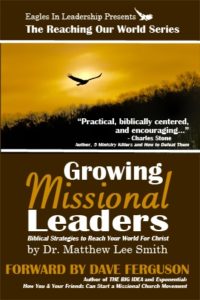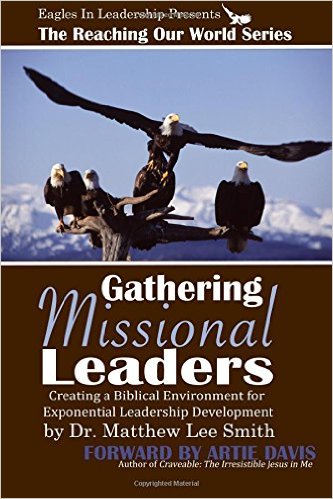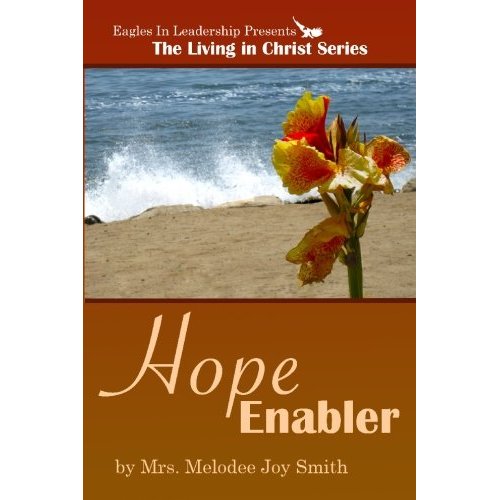by Dr. Matthew Lee Smith (c) 1999
 With tears in my eyes, I realized God had accomplished what He had set out to do among us. Our church now looked like our urban community, over 90% Hispanic. We had intentionally followed what now was a very clear road map. It had not been easy, nor without opposition. Yet before me that Sunday was a worship center that mirrored our city. The process of change from a small, dying, predominantly white church to the vibrant and growing, Hispanic-lead fellowship was a work of God’s grace.
With tears in my eyes, I realized God had accomplished what He had set out to do among us. Our church now looked like our urban community, over 90% Hispanic. We had intentionally followed what now was a very clear road map. It had not been easy, nor without opposition. Yet before me that Sunday was a worship center that mirrored our city. The process of change from a small, dying, predominantly white church to the vibrant and growing, Hispanic-lead fellowship was a work of God’s grace.
It ain’t pretty, just true!
As the quality of American cities declines and churches disappear, pastors and denominational leaders across our nation are asking hard and honest questions. Most of these deal with the issue of change.
Change. The word evokes many emotions: fear, trepidation, excitement, wonder and bewilderment. Community change. The phrase is a reality all too common for us. It conjures up such obstacles as aging, mobility, ethnicity, and technology. Church change. To many this phrase may seem an oxymoron. Every week dozens of congregations in America choose to dissolve compared to the few who are willing to redefine their role in a changing world.
As a whole, the Christian community for the past several decades has been more interested in the American Dream than the Great Commission. When the city goes through urbanization, the church often folds up shop and moves to the suburbs. With a pastorate of eleven years in East Los Angeles County, CA, I was able to see the stages of urbanization have their effect upon the local church. How does this happen?
The natural process of decline
Stage One: Inception / Formation. As our community began in the 1920’s, so did its optimism. In 1926, several folks came together to start a work under the American Sunday School Union. People were saved and growth was the norm. As optimism reigned, people said, “Let’s get over there!” There was the excitement of “new birth” all around.
Stage Two: Expansion. As the Bible study / Sunday School grew, people began to say in their enthusiasm, “Let’s start a church!” Eventually a new church sprouted up among the orange orchards to the east side of Los Angeles. With the birth of this new church, a more permanent platform for evangelism and discipleship in this growing community took root. Each step of growth brought the infant church into its young adulthood.
Stage Three: Stagnation. With the building of the church facilities, there came a great expenditure of energy, time and financial resources. People got tired. However, the optimism was still there and the call of the faithful was “Let’s grow our church!” As the community grew, so grew the church, often through transfer growth.
Communities however grow to a certain point and then begin to stagnate. So did our community. Affluence took over. The automobile made it easier to drive further to work and people moved again; this time out of the community. With this stagnation of the community, the church changed its focus from evangelism to edification. “Our needs” replaced the needs of others. “Middle age” symptoms had set into the church as a whole.
As John Ortberg says, “It is possible for a church to go 20, 30 years or more without producing fruit. People are not challenged, volunteers not trained, resources not well-stewarded – and no one complains (Leadership, Spring 2000. 29).” This is stagnation at its clearest.
Stage Four: Invasion. The inevitable demographic change then occured as “white-flight” took its toll. “They” arrived. Whether that is the Hispanics, as we experienced, or the Chinese, Koreans, Iranians, etc., “they” arrive in increasing numbers. Soon the church was supported by “long-haul” Christians who lived in the suburbs and commuted to church property on Sunday. Increasingly, the local church looked less and less like its community. At this point, a clear message was proclaimed quietly: “Let’s close our church to ‘them’”. The church became more like a Country Club and less like a Rescue Station. Like parents whose grown adults return to cramp their new found freedoms, these immigrants caused prejudice to rear its ugly head.
Stage Five: Evacuation. “Let’s flee out church!” became the cry. People admitted their fears of the “way the neighborhood is going.” We heard people say, “This used to be such a nice community.” Our church felt the deepest wounds of evacuation in the 1970s and 1980s. Even the long-haulers began to drift away and the church went through a period of decline. The heart for evangelism had been lost and the masses all about the church facility were almost ignored. As the old-timers went into retirement, having done their bit for God and Kingdom, the church suffered deeply. We became a church of extremes with several very young families and several very old families. Only those who were unable or unwilling to get out of town remained behind.
Stage Six: Deterioration. A lack of people means a lack of finances and people to work on the facilities. Services, suffering from a limited pool of talent and ministries, were curtailed or terminated. I can remember the church organ sat on the platform for five years – never being played in all that time for lack of someone to play it – before we decided to remove it. Selfishness had borne its fruit and those long gone had forgotten about “their” church. Now in the midst of survival hope was lost. The church was now in its “old age.”
Stage Seven: Degradation and Death. In most churches, defeat comes when the few who have attempted to “hold out” now admit the cause is lost. With a heavy heart the dissolution clause is enacted and the church facilities are sold. With the sale comes the loss of the new cultural community for Christ.
Somewhere between the birth and the death of the local church selfishness took center stage, replacing self-sacrifice. From a clear goal of reaching that community with the Gospel, the church wanders in an aimlessness that brings about its death.
But God has a better plan!
And we will talk about that next Monday in part 2!
————-
Eagles In Leadership exists to help you and your church. Should you desire, we are here to help assist you in your leadership needs.











